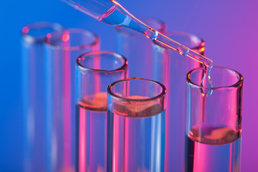Spectroscopy and Forensics
Forensic sciences involves the study of evidence for criminal investigations. Forensic experts are vital in piecing together the details of a crime and can provide crucial testimonies in court. During the investigation, evidence and materials known as criminalistics are collected from the crime scene. Oftentimes, it is necessary to identify and analyze bodily fluids in a crime lab in order to learn information.
One of the challenges of forensic evaluations is that they should be done in a nondestructive manner so as to not destroy the evidence. The traditional methods that are currently used are unable to satisfy that need. They are usually damaging and require very specialized skills and therefore are not optimal for completing the task. Another issue is that compounds and chemicals can potentially be dangerous or even explosive, which makes it very difficult for field agents to easily gather information about them.
Spectroscopy has proven to be a non-destructive method for successfully analyzing different bodily fluids as well as other types of forensic materials such as drugs or fingerprints. This allows the evidence to be tested while still preserving it. It also utilizes portable instrumentation making it easy to do the testing right at the location of a crime without even removing the evidence from the scene. Another advantage is that a specimen does not require any preparation to be evaluated by a spectrophotometer. In order to identify samples, such as type of body fluid, the spectrophotometer compares samples to data within a spectral library.
The spectrophotometer can also be used to verify other contaminants that may be present at the crime scene or distinguish between human and animal fluids. For example, in toxicology cases it can evaluate the presence of chemical impurities in food or medicinal tablets. If a rare material is found, the use of a spectrophotometer can help determine whether it was very specific to the crime scene and if it possibly originated there. This helps forensic scientists put various pieces of information together in order to answer questions and draw conclusions about crimes.
The FBI is the country s leader in crime investigation and implementing the use of spectroscopy will greatly assist its Hazardous Materials Response Unit. The data provided by a spectrophotometer is reliable with little, if any, sample preparation and therefore makes it an ideal tool for use in forensic science.
For more information on spectrophotometers, visit sensing.konicaminolta.us/us










